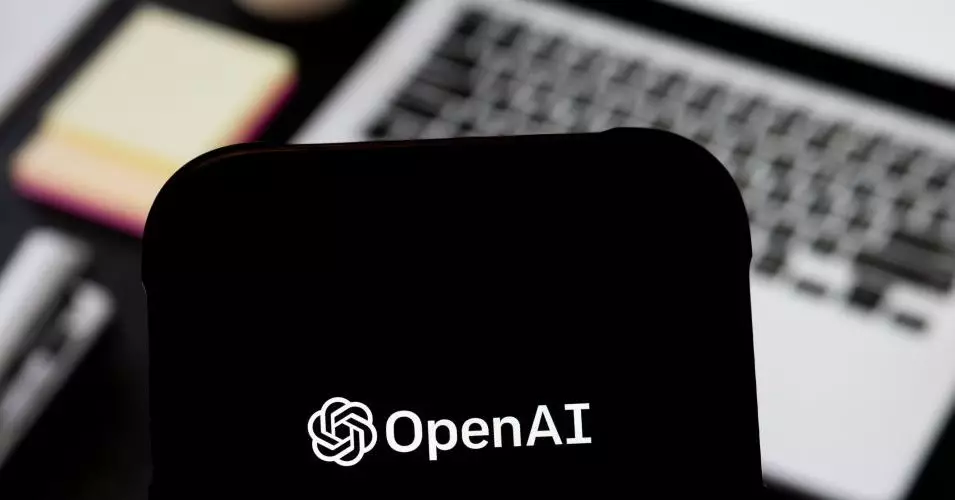In a noteworthy announcement, OpenAI’s CEO Sam Altman has revealed plans to release an open-weight artificial intelligence model in the near future, significantly altering the landscape of AI development. This decision stems partly from the meteoric rise of DeepSeek’s R1 model, a notable player in the AI space that has captivated enthusiasts and professionals alike. Altman’s statement made on social media platform X signals a vibrant shift, hinting at OpenAI’s recognition of the importance of open-source accessibility in AI. The implications of this shift are profound: by embracing open-weight models, OpenAI is not only diversifying its offerings but also inviting a global community of developers into the innovation fold.
Learning from Competitors
OpenAI’s pivot towards open-weight models is a calculated response to a competitive landscape that has seen companies like DeepSeek and Meta thrive with their open offerings. Altman previously admitted that OpenAI was “on the wrong side of history” regarding this domain. By acknowledging the success of rivals, he demonstrates a commitment to adaptation and evolution—a trait that is indispensable in the rapidly changing tech ecosystem. The urgency behind this initiative is palpable; Altman expressed that developing an open-weight AI model is now more important than ever. It appears that OpenAI is not merely reacting but actively recalibrating its vision to remain relevant and influential in a market where transparency and accessibility are increasingly valued.
The Cost Factor: Efficiency Meets Accessibility
One of the core motivations driving the development of OpenAI’s new model is the demonstration of affordability in AI training. Reports suggest that DeepSeek’s R1 was trained at a significantly lower cost than many competing models. By creating a new open-weight model, OpenAI seeks to assert that powerful AI can indeed be accessible, not just financially but also in terms of usability. The ability to modify and operate an open-weight model on personal hardware not only democratizes AI but could also foster creativity and innovation among developers who might have previously felt sidelined by costly proprietary systems. This is a crucial step toward ensuring that advanced technologies are available to a broader range of users, thus catalyzing a surge of creativity in AI applications.
The Balance of Innovation and Safety
Despite the excitement surrounding the potential of open-weight models, concerns over safety and ethical implications loom large. OpenAI’s commitment to rigorous testing before releasing the model reflects an acute awareness of the risks associated with more accessible AI technologies. The debate centers around the potential misuse of such models, from cyberattacks to the fabrication of harmful substances. Johannes Heidecke, an AI safety researcher at OpenAI, underscored the importance of safety measures by referencing the company’s Preparedness Framework. This framework represents a proactive approach to mitigating risks associated with open-source AI—a critical balance that every tech leader must navigate in this new age of innovation.
Creating a Collaborative Ecosystem
OpenAI’s strategy includes fostering collaboration within a community of developers, a move that is both smart and necessary. By inviting developers to participate in the early access phase of the upcoming model, OpenAI is building a collaborative ecosystem that encourages feedback and shared innovation. This community-oriented approach mirrors the strategies employed by other successful open-source initiatives, like those from HuggingFace and Meta. In doing so, OpenAI not only empowers developers but also cultivates advancements that might not have emerged within isolated environments.
Furthermore, while Meta initiated the trend of more open AI models with the Llama series, it is essential to note the aspects of transparency that remain unaddressed. Meta’s licensing constraints can inhibit broader innovation by restricting how developers can leverage these models. In contrast, OpenAI’s forthcoming open-weight model has the potential to break these barriers, fostering a truly open environment where developers can innovate without unnecessary limitations.
The Road Ahead: Challenges and Opportunities
As OpenAI prepares to launch its open-weight AI model, it stands at the intersection of challenge and opportunity. The initiative comes with a responsibility to navigate the pitfalls of open-source technology while ensuring the benefits far outweigh the risks. The successful implementation of this model could make waves across industries, fueling not just technological advancements but also shaping the ethical frameworks within which AI operates. This is a bold leap into the future of AI, one that could redefine how developers engage with machines, ultimately leading to a more diverse and innovative technological landscape.


Leave a Reply